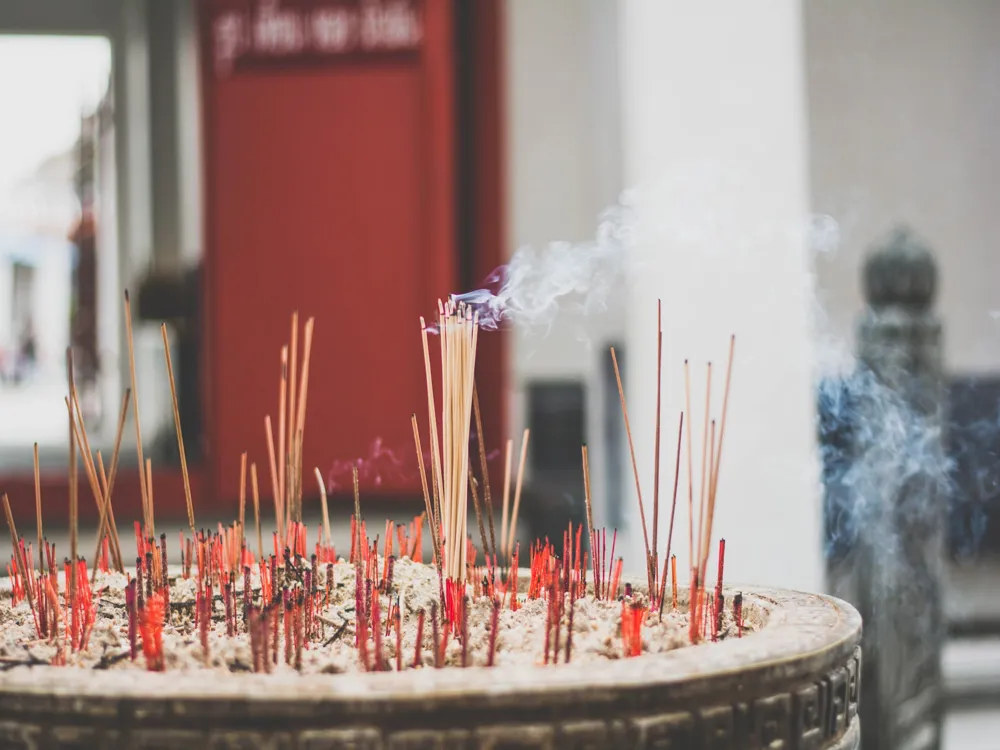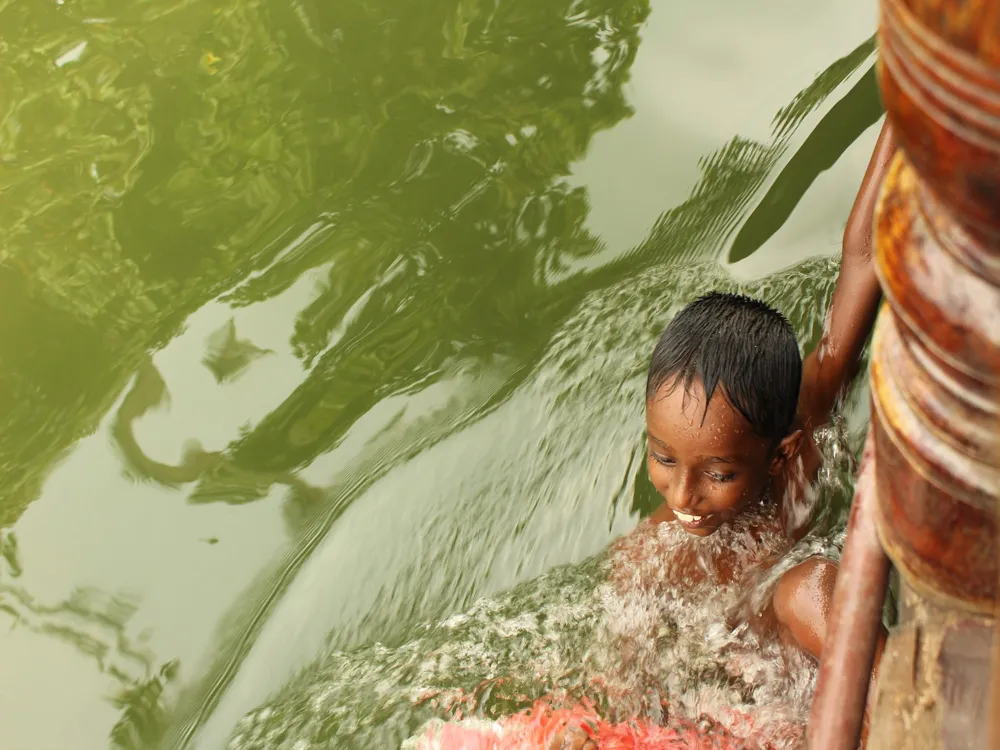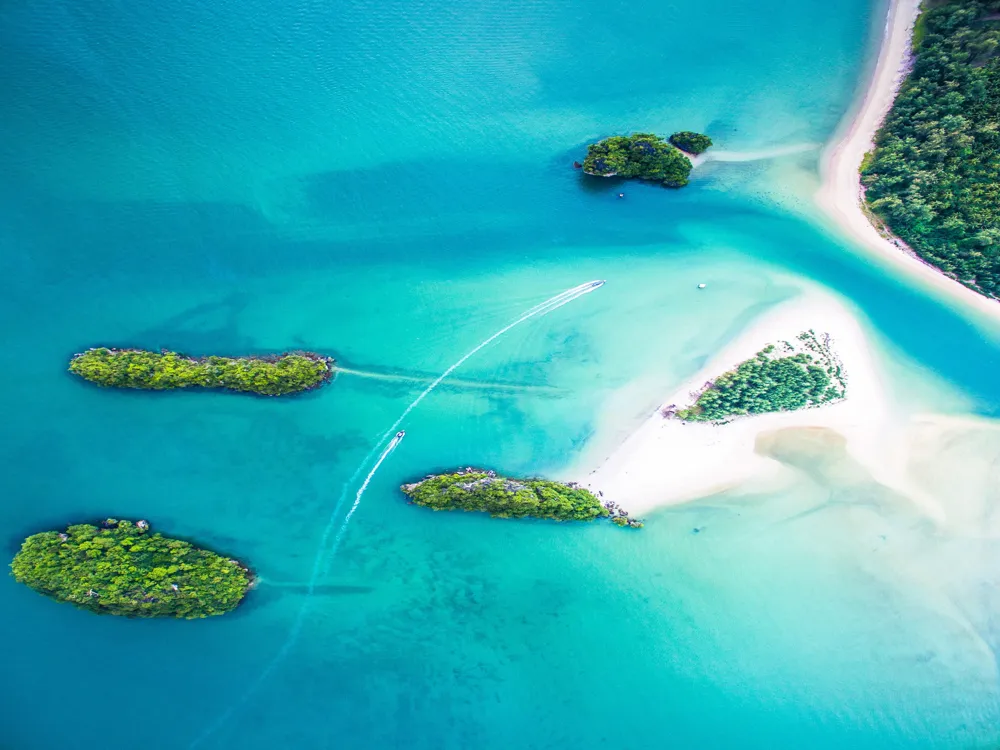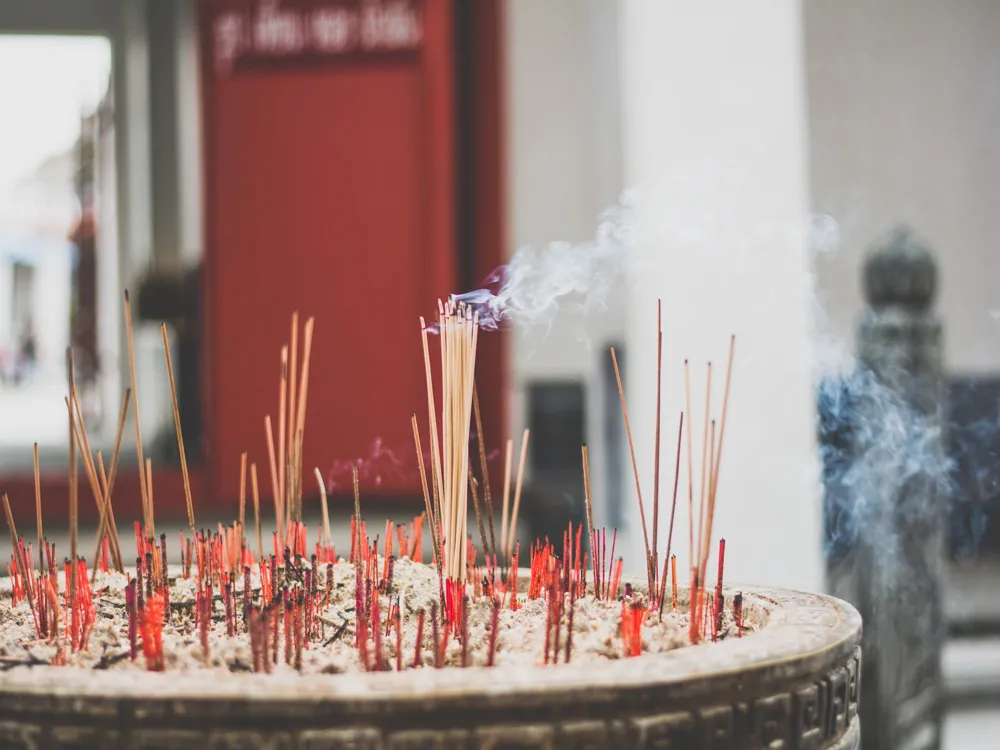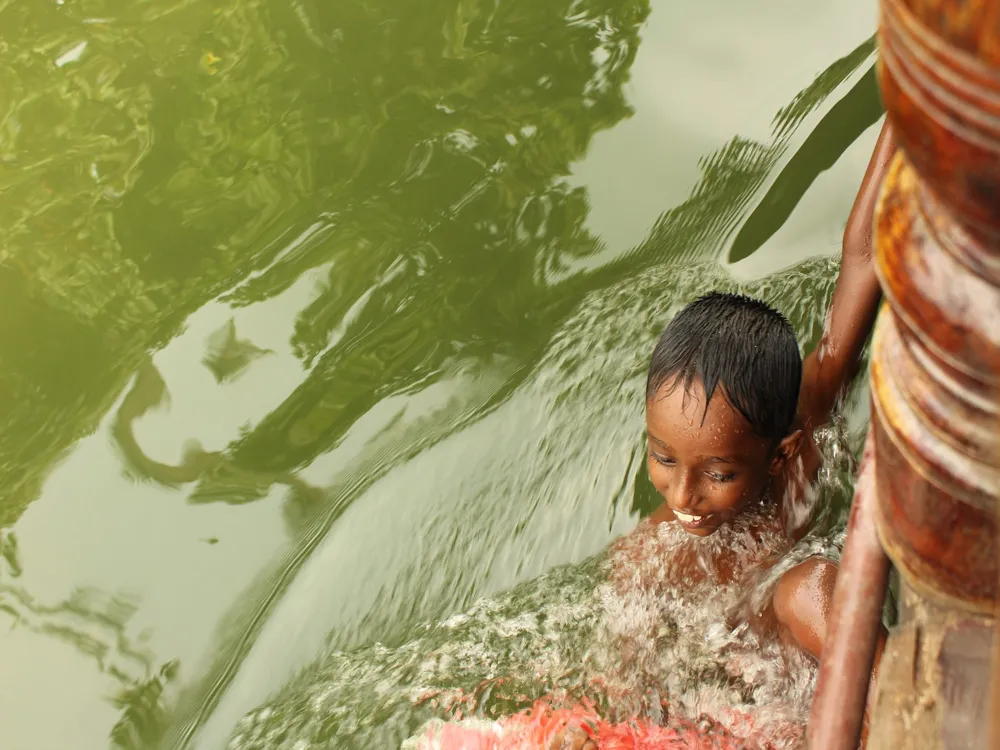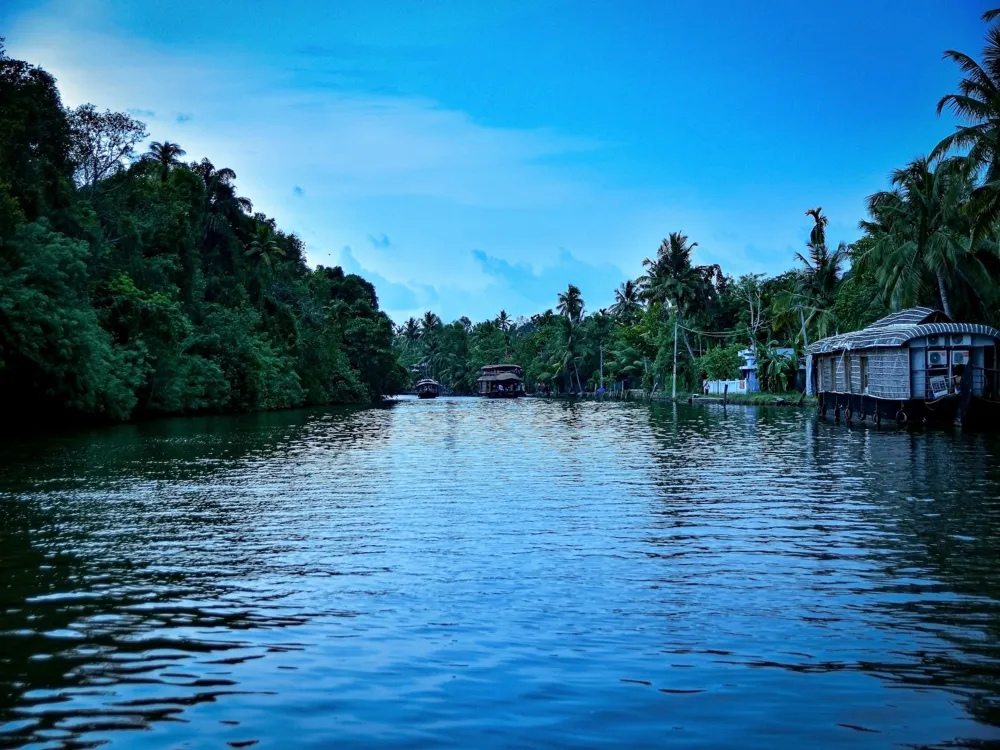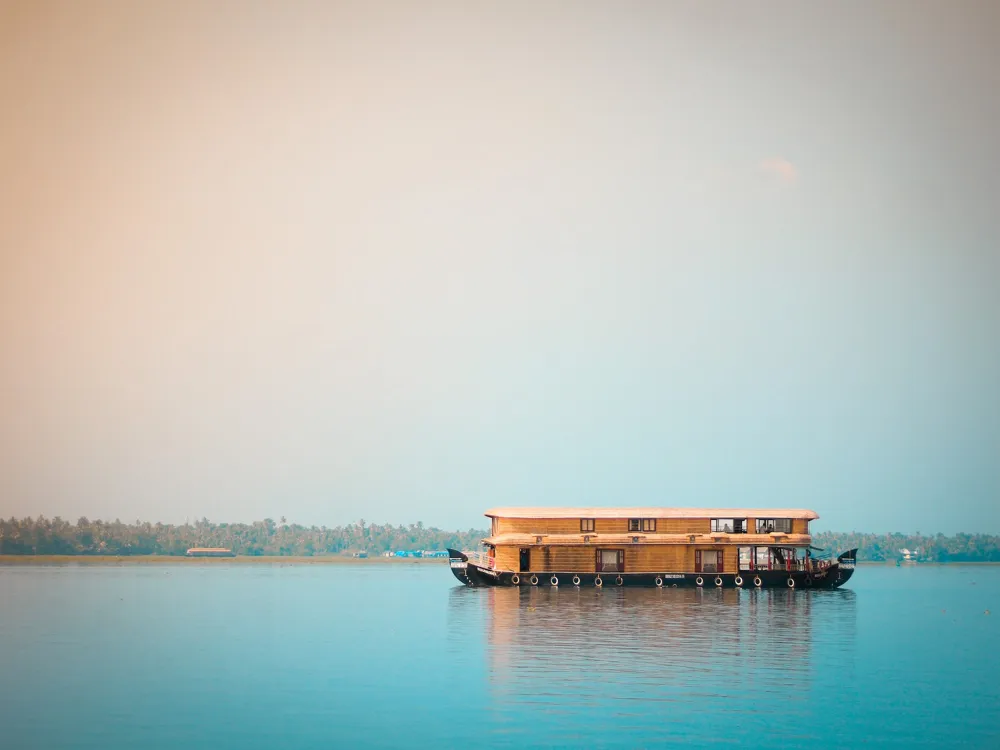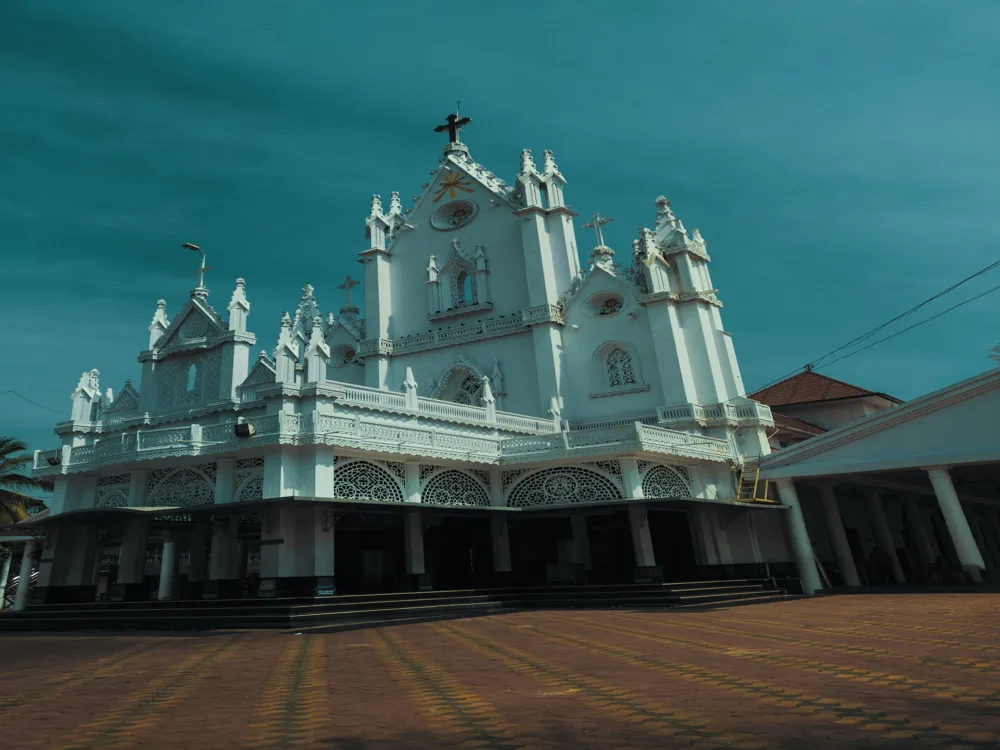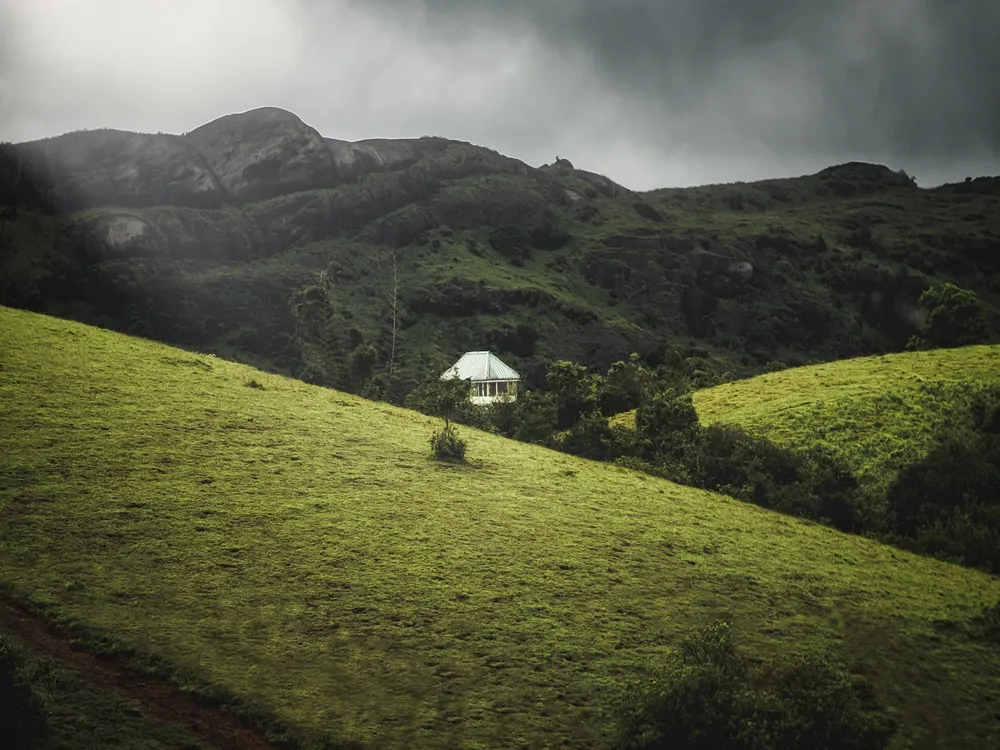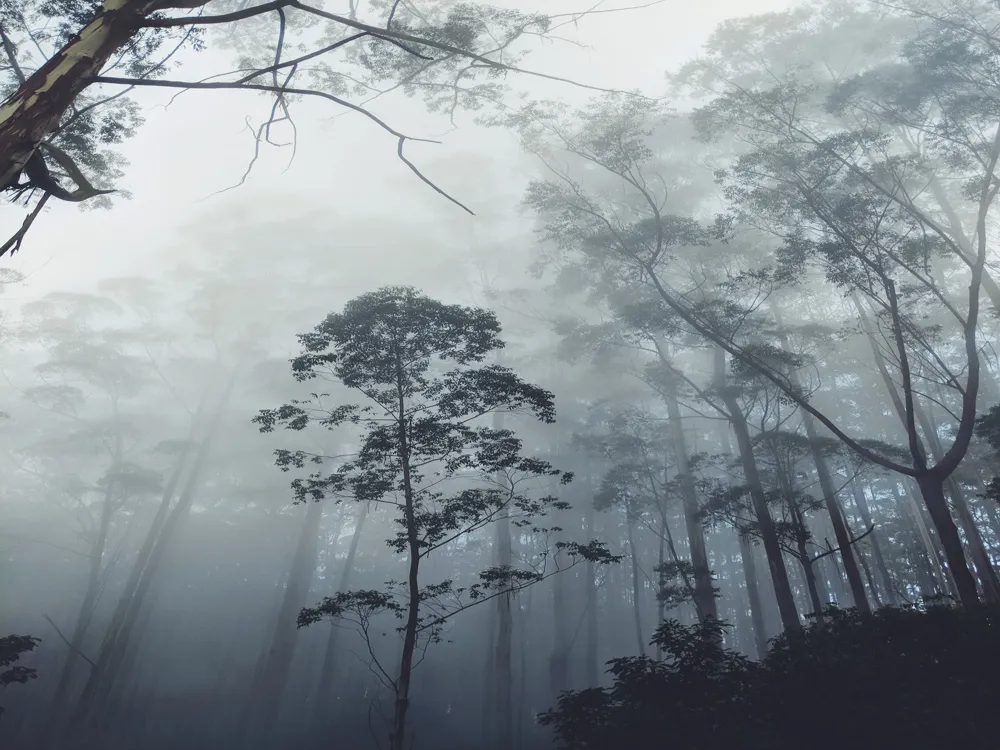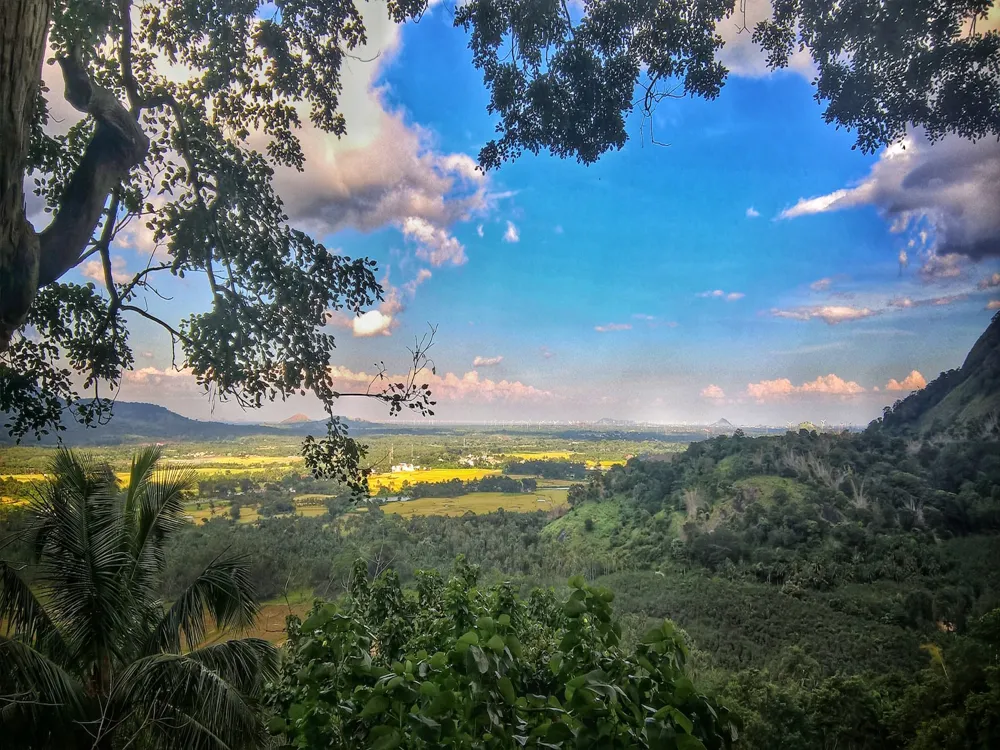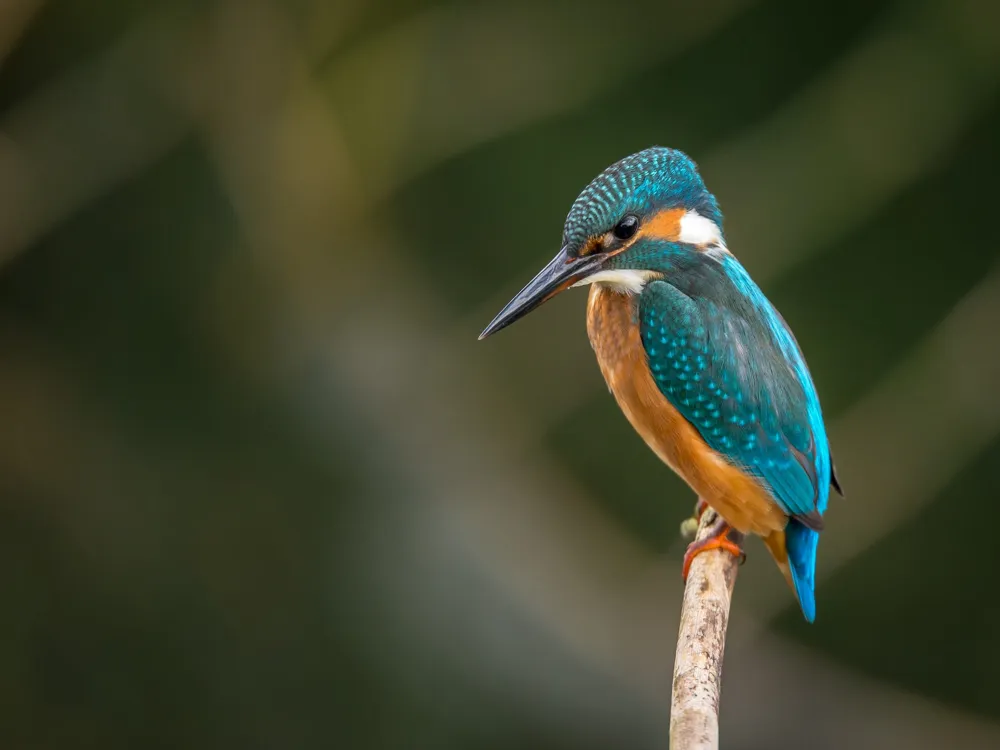Kuttanad, a region in the Alleppey district of Kerala, is a picturesque expanse known for its unique geographical features and cultural richness. Often hailed as the 'Rice Bowl of Kerala', Kuttanad stands out for its vast paddy fields and intricate network of rivers, canals, and lakes. This verdant area lies below sea level, making it one of the few places in the world where farming is done below sea level. The history of Kuttanad is as fascinating as its landscape. It has been an agricultural hub since ancient times, primarily due to its rich and fertile soil. The farming techniques here are unique, adapted to the water-logged conditions. The region's economy primarily hinges on agriculture, with rice being the predominant crop. Besides farming, Kuttanad's economy is supplemented by fishing and duck rearing, which are integral to the local way of life. The social fabric of Kuttanad is a tapestry of diverse cultures and traditions. It is home to a myriad of communities who have lived in harmony for centuries. The region's cultural calendar is dotted with colorful festivals and events, which are a true reflection of its rich heritage. The famed snake boat races of Kerala, particularly the Nehru Trophy Boat Race, held on the Punnamada Lake, is a major attraction, drawing thousands of spectators annually. Ecologically, Kuttanad is a treasure trove. The region's vast wetlands are a haven for a wide array of flora and fauna. The backwaters of Kuttanad are part of the Vembanad-Kol wetland system, which is the largest of its kind in India. This ecosystem supports a variety of species and plays a crucial role in maintaining ecological balance. The region's natural beauty, coupled with its rich biodiversity, makes it a haven for nature lovers and eco-tourists. The architecture in Kuttanad is a harmonious blend of tradition and adaptation to the unique environmental conditions. The most striking feature of the architecture here is the construction of houses and buildings that are adapted to the water-logged environment. The traditional homes, known as 'Tharavadu', are built on raised platforms or mounds to protect them from flooding. These structures are typically made of locally sourced materials like wood, laterite, and coconut leaves, reflecting the region's resourcefulness and connection with nature. Another notable architectural element in Kuttanad is the network of canals and waterways. These were historically built for transportation and irrigation, and they play a vital role in the everyday life of the people. The canals are lined with charming houses, temples, and churches, showcasing the region's rich cultural tapestry. The blend of Hindu, Christian, and Muslim architectural influences is evident in the religious structures, each bearing distinct features like ornate woodwork, intricate carvings, and unique roofing styles. The boat houses of Kuttanad are a marvel in themselves. Known as 'Kettuvallams', these were traditionally used for transporting goods but have now been transformed into luxury houseboats, offering a unique staying experience. The design of these houseboats is a testament to the ingenuity of local craftsmen, combining comfort and elegance without disturbing the ecological balance. In summary, the architecture of Kuttanad is not just about the aesthetics but also about sustainable living. It embodies the wisdom of generations that have learned to coexist harmoniously with nature. The architectural landscape of Kuttanad is a living museum, showcasing the ingenuity of traditional building techniques and the cultural diversity of the region. While Kuttanad is beautiful year-round, the best time to visit is between November and February. During this period, the weather is pleasant, with minimal rainfall, making it ideal for exploring the region's natural beauty and cultural attractions. Don't miss out on the local cuisine, which is a blend of traditional Kerala flavors with a unique twist. Rice and fish are staples here, and the 'Karimeen Pollichathu' (pearl spot fish marinated and wrapped in banana leaves) is a must-try. Participate in local festivals and boat races to experience Kuttanad's vibrant culture. The snake boat races, especially the Nehru Trophy Boat Race, are spectacular events that showcase the region's competitive spirit and teamwork. Respect the fragile ecosystem of Kuttanad by engaging in eco-friendly practices. Opt for houseboats that follow sustainable tourism practices and avoid littering in the backwaters. Kuttanad is well-connected and accessible by various modes of transport. The nearest airport is the Cochin International Airport, which is about 85 kilometers away. From there, you can hire a taxi or take a bus to reach Kuttanad. If you prefer to travel by train, the nearest railway stations are Alappuzha and Changanassery. Local buses and taxis are readily available from these stations to take you to Kuttanad. For those who enjoy a scenic route, a boat trip through the backwaters from Alappuzha is a delightful way to reach Kuttanad, offering a glimpse into the serene beauty of the backwaters. Read More: Overview of Kuttanad in Alleppey, Kerala
Architecture of Kuttanad
Tips When Visiting Kuttanad
Best Time to Visit
Local Cuisine
Cultural Experiences
Eco-friendly Travel
How To Reach Kuttanad
Kuttanad
Alleppey
Kerala
₹ 8,999 onwards
View alleppey Packages
Alleppey Travel Packages
View All Packages For Alleppey
Top Hotel Collections for Alleppey

Private Pool

Luxury Hotels

5-Star Hotels

Pet Friendly
Top Hotels Near Alleppey
Other Top Ranking Places In Alleppey
View All Places To Visit In alleppey
Faq on Alleppey
What is Kuttanad Alleppey famous for?
Kuttanad Alleppey is renowned for its picturesque backwaters, lush paddy fields, and serene village life. It's often called the "Venice of the East" due to its intricate network of canals and waterways.
How can I reach Kuttanad Alleppey?
Kuttanad Alleppey can be reached by road, rail, or waterways. The nearest major railway station is Alleppey, and there are well-connected roads from nearby cities. Many tourists also opt for houseboat cruises through the backwaters to reach Kuttanad Alleppey.
What are the must-visit attractions in Kuttanad Alleppey?
Some must-visit attractions in Kuttanad Alleppey include the Alappuzha Beach, Kumarakom Bird Sanctuary, Pathiramanal Island, and the famous Alleppey backwaters. Additionally, exploring the charming villages and experiencing the local way of life is highly recommended.
Can I stay in houseboats in Kuttanad Alleppey?
Yes, staying in houseboats is one of the most popular accommodation options in Kuttanad Alleppey. These traditional houseboats offer a unique experience of living amidst the backwaters, with all modern amenities provided.
What is the best time to visit Kuttanad Alleppey?
The best time to visit Kuttanad Alleppey is during the winter months, from October to February, when the weather is pleasant and ideal for sightseeing and outdoor activities. However, some travelers also enjoy visiting during the monsoon season to experience the lush greenery and the beauty of the rains in the backwaters.
View alleppey Packages
Alleppey Travel Packages
View All Packages For Alleppey
Top Hotel Collections for Alleppey

Private Pool

Luxury Hotels

5-Star Hotels

Pet Friendly
Top Hotels Near Alleppey
Other Top Ranking Places In Alleppey
Faq on Alleppey
What is Kuttanad Alleppey famous for?
Kuttanad Alleppey is renowned for its picturesque backwaters, lush paddy fields, and serene village life. It's often called the "Venice of the East" due to its intricate network of canals and waterways.
How can I reach Kuttanad Alleppey?
Kuttanad Alleppey can be reached by road, rail, or waterways. The nearest major railway station is Alleppey, and there are well-connected roads from nearby cities. Many tourists also opt for houseboat cruises through the backwaters to reach Kuttanad Alleppey.
What are the must-visit attractions in Kuttanad Alleppey?
Some must-visit attractions in Kuttanad Alleppey include the Alappuzha Beach, Kumarakom Bird Sanctuary, Pathiramanal Island, and the famous Alleppey backwaters. Additionally, exploring the charming villages and experiencing the local way of life is highly recommended.
Can I stay in houseboats in Kuttanad Alleppey?
Yes, staying in houseboats is one of the most popular accommodation options in Kuttanad Alleppey. These traditional houseboats offer a unique experience of living amidst the backwaters, with all modern amenities provided.
What is the best time to visit Kuttanad Alleppey?
The best time to visit Kuttanad Alleppey is during the winter months, from October to February, when the weather is pleasant and ideal for sightseeing and outdoor activities. However, some travelers also enjoy visiting during the monsoon season to experience the lush greenery and the beauty of the rains in the backwaters.








